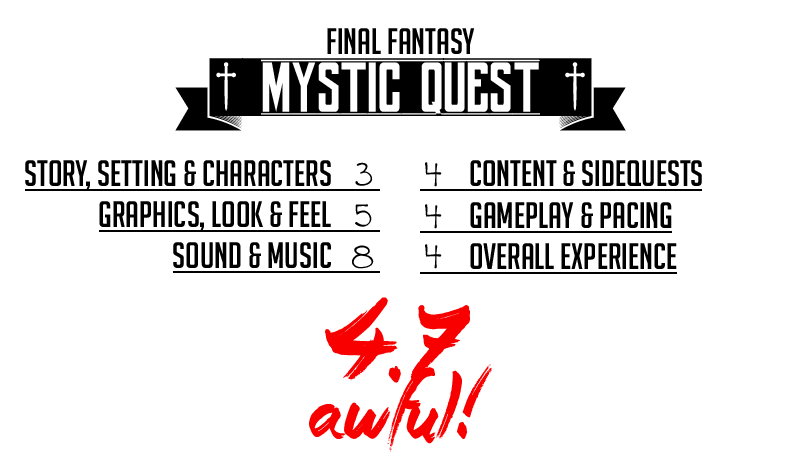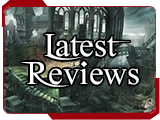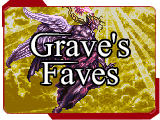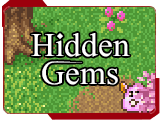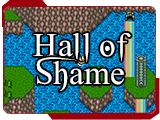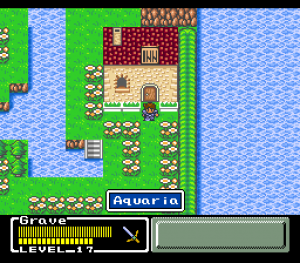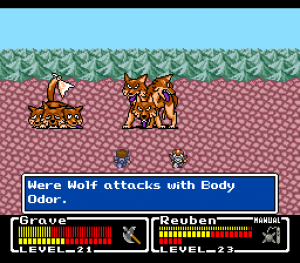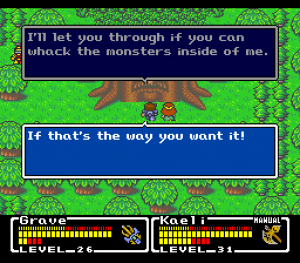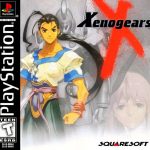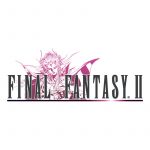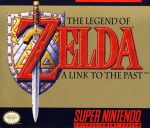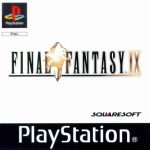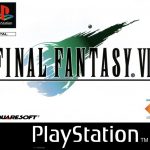Grave's RPG Reviews
Game Boy Advance · Nintendo 2DS/3DS · PC · PlayStation · PlayStation 3
PlayStation 4 · PlayStation Portable · PlayStation Vita · RPG Maker · SNES · Switch · Wii
WiiU · Xbox 360 · Xbox One
Final Fantasy: Mystic Quest
A spin-off of the popular Final Fantasy series, released between IV and V, Final Fantasy: Mystic Quest (known in Europe as Mystic Quest: Legend) was intended to be an entry-level JRPG for Western audiences, with simplified gameplay and story to help ease gamers unfamiliar with RPGs into the genre.
Essential Information
This Review: SNES (1992)
Near-Identical Versions: Wii (2010), WiiU (2014, Japan only)
Game Length: 12-15 hours
Critic Rating: 73% aggregateThe aggregate critic rating is based on independent review scores from several other websites.
Grave’s Thoughts
Imagine all the most generic and over-used elements of the early Final Fantasy games — a world in peril, a lone hero who can save the day, a mysterious wise old man, crystals of power attuned to the elements, and an evil villain whose sole purpose in life seems to be to wreak destruction and mayhem, and wishes for naught but to end the world as we know it. That, in a nutshell, is Final Fantasy: Mystic Quest. The poor story can be forgiven to an extent since the entire intent of the game was to be something basic and entry-level, but the storyline is so thin and uninspiring that it’s hard to even care about the fate of this crappy, generic little world. And oh, generic it is — there’s a fire town near a volcano, an ice town in a snowy tundra… you get the idea.
The characters in Mystic Quest are two-dimensional set pieces at best, usually providing the hero with either a companion in battle, a way to bypass a certain obstacle, or — usually — both. Need to get through a forest with the path blocked by trees? No problem, here’s a companion with an axe! There’s absolutely no character development, and everyone becomes the hero’s best friend pretty much the very moment they meet.
I’ve intentionally chosen some of the better-looking screenshots for the sake of this review, but make no mistake: this is not a pretty game by any stretch of the imagination. The graphics are functional enough, but the layout of many areas is barren and haphazard, with almost no effort made to disguise the frankly ugly use of limited tile-sets.
The user interface follows suit, being the bare minimum of acceptable without making even the slightest effort to excel in any way whatsoever. In the case of both the UI and the game graphics themselves, the actual art in the game is decent enough, but it’s employed in such a barren and utilitarian manner that it lacks any character or personality whatsoever.
One small saving grace is that the enemy sprites in the battle system — none of which are animated, mind you — actually have several different states depending on the enemy’s current health. Regular enemies tend to only have two or three, but bosses can have up to four or five each, which is a fairly unique feature that I wish had been employed in more RPGs of the time. The more beat up an enemy becomes, the angrier and more injured they look, often in a cartoonishly amusing manner.
In terms of audio, at least, the game has some small measure of positivity. While the sound effects — much like the rest of the game — are utilitarian and adequate at best while being neither terribly offensive nor particularly noteworthy, the music is a step up from the rest of the game. Most of the game’s soundtrack is fairly decent — not up to par with other Final Fantasy titles, but certainly good quality for an RPG of its time. It does a good job filling out the game and bringing the otherwise soulless world somewhat to life, a soundtrack which would have served a superior game much better.
Of particular note, the battle theme is energetic and badass (though you may get sick of hearing it after a while — see below), and the Doom Castle theme, which plays in the last dungeon of the game, is absolutely killer. Why a soundtrack of this quality was wasted on such a weak game is beyond me.
The first hour or so of gameplay seems absolutely charming and adorably simple compared to other RPGs of the SNES era and beyond, but the feeling fades very quickly into one of tedium and frustration.
The game takes place in three main screens — the world map is a fairly linear affair where you can move from place to place on rails, unable to explore beyond the path intended. There are no random encounters, however various ‘battlefields’ are scattered across the world — these are sites where you can choose to fight a series of (usually very similar or identical) foes, and after ten victories, are awarded with either an item, some money, or a handful of experience points.
Secondly, dungeons and towns are on a rigid grid-based system — totally expected of an RPG of this era — with an unexpected action-RPG element allowing the player to interact with the environment with various weapons, such as using an axe to cut down trees or a claw to climb up walls. It’s a cute little addition which works in the game’s favour at first, though becomes somewhat tedious when faced with a huge room full of mushrooms blocking the way.
Rather than random encounters, enemy positions are fixed and visible in the world until defeated. This is both a blessing and a curse — most of the dungeons are arranged in a frustrating, labyrinthine design, so being forced to deal with random encounters while trying to find the correct path would be incredibly frustrating. On the other hand, there are generally far too many enemies blocking every critical path in the game, forcing the player into a seemingly endless stream of entirely uninteresting encounters.
Thirdly, the battle system — it’s like a blend of early Dragon Quest and Final Fantasy I, and about as simplistic and boring as the screenshots above should imply.
Given that Mystic Quest was designed as an entry-level JRPG for beginners to the genre, does it stand up to the task? Would it be a good starting point for novices interested in dipping their toes in the water?
Absolutely not. If I wanted to turn someone away from ever giving the genre a fair chance, I’d suggest they play this travesty. The gameplay is an exercise in both tedium and frustration — it’s impossible to lose, as death in battle simply results in the game asking if you’d like to try again from the start of said battle, but the over-reliance on frustrating status effects such as petrification and confusion often lead to states where the entire battle will be lost in a single turn, resulting in having to try again and hope for better luck.
The dungeons are intentionally maze-like and obnoxious to explore, with forced battles around every corner and nary a single doorway without another tedious set of foes guarding the entrance, and the gameplay is such a bizarre mix of far-too-easy and sometimes completely unfair.
Seasoned RPG veterans will gain absolutely nothing from the experience, while there are a plethora of other games more well-suited to beginners. I can appreciate what Square tried to do, and perhaps at the time of its release, it was a viable option for a novice — but not so much anymore.
